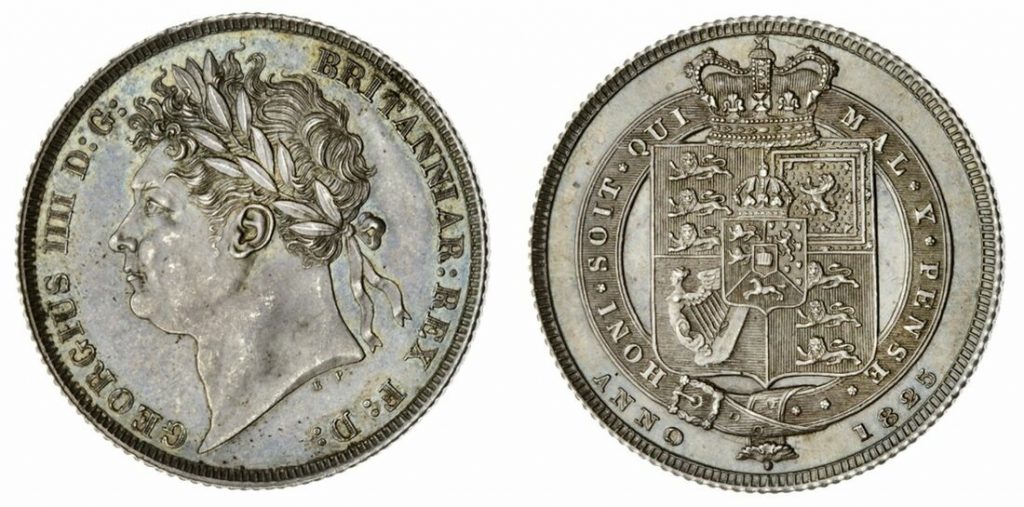Part of the “Crime & Punishment in Cocking in the Nineteenth Century” series
On 20 November 1824, 19-year old Harriet Cooper walked the 9 miles from Cocking to Petworth for the annual St. Edmund’s Fair, with a basket of pies and rolls for sale.
Trade during the day was brisk until about 5 o’clock in the evening, as it was starting to get dark, when a customer offered her a shilling coin to pay for a one penny roll, for which she gave him a sixpence and ten halfpennies in change. About ten minutes later, the same customer returned to buy a pie, also costing a penny. Again he offered her a shilling coin in payment, for which she gave him eleven pennies in change.

Within five minutes, the customer was back to buy another penny roll, once again offering a shilling coin in payment. By now, Harriet was suspicious and said that she had no more change and could not take his coin.
Despite her suspicions, when another customer offered her a shilling coin to pay for two halfpenny pies, she again accepted and gave him his change.
With the third shilling, she went to the stall of a Mr Goacher and tried to use it to pay for a bag of nuts. Goacher refused to accept the coin, saying that it was “a bad one”. Now worried that she had taken three dud coins, she asked Goacher to look at the other two, which he also declared as bad.
She and Mr Goacher then found the special constable, Richard Habbin, and told him what had happened. She and Habbin started to look for the two villains, when the first customer approached her and asked to buy another penny roll. As he reached into his pocket for yet another shilling coin, he spotted Habbin, so quickly retuned the dud coin to his pocket and took out a penny to pay for the roll.
Harriet told Constable Habbin that this was one of the culprits and he was soon taken into custody and handed over to the regular constable, John Lucas, who put him into the cage. The prisoner, who gave his name as “John Baker”, was searched and had four shillings, one of which was counterfeit, plus some sixpences and copper coins.
Harriet and Constable Lucas took the three shillings that she had received from “John Baker” and his accomplice, plus the one found on Baker, to John Easton, a silversmith, who confirmed that all four were “false money” and all appeared to have come from the same die.
On 22 November 1824, Baker appeared before George Daysh J.P. on a charge of passing counterfeit coins and was committed to trial at the next Petworth Quarter Sessions. On 11 January 1825, he was sentenced to one year’s imprisonment with hard labour and required to put up £20 surety himself and two other sureties of £10 each for his good behaviour for two years after his release from prison.
Sources
Sussex Advertiser: 17 January 1825. Christmas General Quarter Sessions
West Sussex Record Office:
QR/W734 & seq. January 1825. Petworth Quarter Sessions Roll, including
QR/W734/148. Affidavit of Harriet Cooper of Cocking
Harriet Cooper
Harriet Carter married James Cooper at Lodsworth on 18 May 1822. She was baptised at Thakeham on 9 June 1805, the daughter of William Carter (1782–1849) and his wife Hannah née Charman (1783–1852). [Her gravestone states her date of birth as 6 April 1802, but this is dubious as her sister Mary was baptised at Thakeham on 29 May 1803. It is unlikely that her parents would have had her baptised after her “younger” sister.]
On the assumption that she was born a month or so before her baptism, i.e. about April 1805, she would have been barely 17 when she married.
James Cooper was born and baptised in Graffham in 1792 and had been married to Mary Lambert, with whom he had two daughters; Mary born in 1818 and Caroline, who was born in May 1820, but died at three weeks old, and was buried at Graffham on 11 June, four days after her mother.
Harriet’s first child, Harriet was baptised at Graffham on 22 December 1822, followed by James, baptised on 18 July 1824.
Thus, at the time of the incident at Petworth on 20 November 1824, Harriet was probably still only 19, with two children of her own and a step-daughter, all under five years old.
She and James went on to have a further five children born in England:
Emma, baptised 26 February 1826
Henry, baptised 9 September 1827
Caroline, baptised 15 March 1829
Sarah, baptised 31 January 1831
William, baptised 4 November 1832
Apart from William, who was baptised at Tillington, all the other children were baptised at Graffham.
In 1835 or 1836, James and Harriet emigrated to Canada under the Petworth Emigration Scheme. They settled in Adelaide Township, Ontario, where they had at least a further five children, although another three died as infants.
Harriet died in Adelaide in December 1857, aged 52) following which James married for a third time, to a widow, Mahetable Eastman (1806–1903). James died at Adelaide in May 1883, aged 90.
I have not been able to trace any record of Harriet Cooper having a connection with Cocking, other than her signed affidavit, where she is referred to as “Harriet Cooper, wife of James Cooper, of Cocking in the county of Sussex, labourer”.
Sources
Ancestry.co.uk
West Sussex, England, Church of England Baptisms, Marriages and Burials, 1482–1812
West Sussex, England, Church of England Baptisms, Marriages and Burials, 1538–1812
West Sussex, England, Church of England Births and Baptisms, 1813–1920
West Sussex, England, Church of England Marriages and Banns, 1754–1936
Find-a-Grave.com
Mount Zion Fourth Line Cemetery: Harriott (sic) Cooper
FreeReg.org.uk
Thakeham Parish Register. 9 June 1805. Baptism of Harriet Carter
Lodsworth Parish Register. 14 May 1822. Marriage of James Cooper and Harriet Carter